The celebration with the strongest community spirit of the Sherpas
If you come to ask me what’s the worst thing I lost for having to come back home earlier than expected, I wouldn’t hesitate for a moment: the Dumchi, the most important festival of the year for the Khumbu’s Sherpa community. This year, despite the country lockdown, they have been able to celebrate it and they told me that there are people living in other areas of the country, including Kathmandu, who have managed to climb up the Khumbu and enjoy “ his ”festival.
ORIGIN AND ORGANIZATION
The Dumchi is a festival originated when the monasteries of Pangboche, Thame and Rimijung were founded, 375 years ago. After a time when it was almost lost, it has recovered its importance in recent decades. It is currently celebrated in eight Khumbu villages during the monsoon season, in late June or early July (this year 2020 was July 1-4). It is just when planting potatoes is over and before the herds of cattle are moved, for the three months of summer, to the grassy pastures in the high areas of the valleys.
It also the return home time of the Sherpas who have been working on trekkings and expeditions during the spring season. Many Sherpas living in Kathmandu take advantage of this festival to spend a few days in Khumbu to gather with family and friends. For all these reasons it is the most important festival from the social point of view, for the Sherpas of Khumbu.
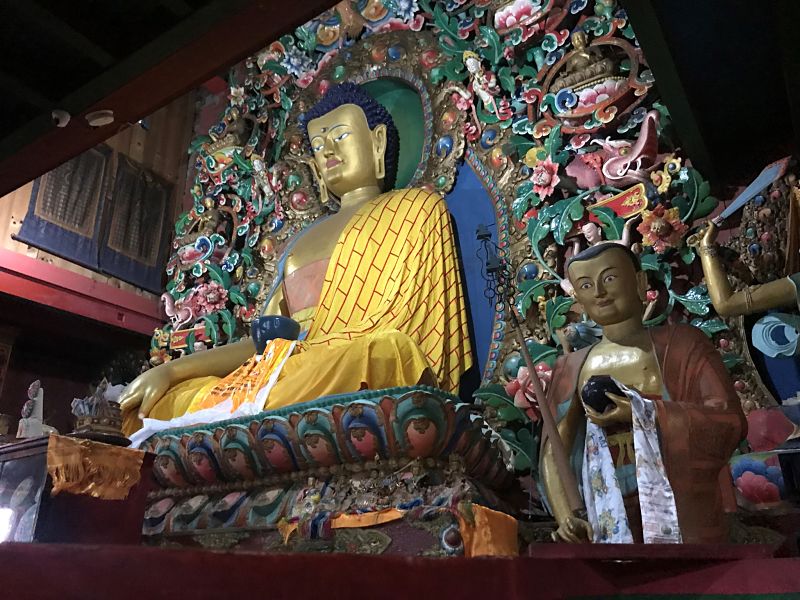
The main purpose of the festival is to celebrate the birth of Guru Rinpoche, who according to tradition was born in a lotus flower in the early eighth century and is considered the founder of Tibetan Buddhism. In many places, this festival is also dedicated to more local spiritual leaders. In Khumbu they also honour Lama Sangwa Dorje, who founded the Pangboche monastery, and Lama Ralpa Dorje, who founded the Thame one. The Dumchi also aims to prevent misfortune and promote peace and prosperity in all people.
In each village where it is celebrated, the Dumchi is sponsored by eight families, known as Lawa, who alternate each year on a rotating basis. Despite the responsibility and expenses involved in this sponsorship, for Sherpas families it is the recognition as an independent family and a member of the community of their village. Currently, due to the high costs that this organization entails for Lawa families, there is a growing movement to limit costs and ask other people in the village to make small contributions to help the organization.
The monks of the village monastery, if any, and if not monks from other monasteries for the occasion, are in charge to prepare the altars and ritual objects, also take part in the organisation.
The eight Lawa families offer lunch and dinner to all attendees during the four days of the festival, as well as tea, chang (rice liqueur), tongba (millet liqueur), beer and refreshing drinks. They are also in charge of placing the long poles with prayer flags at the place where the ceremonies are held. In Namche, this festival takes place in two different spots. The first day ceremony takes place under a large boulder where a huge image of Guru Rinpoche is painted, located outside the village a little above the monastery. The rest of the ceremonies and social activities take place in the monastery itself, where there is a beautiful courtyard, cloister type, which, over time, has become a kind of social venue for the village.
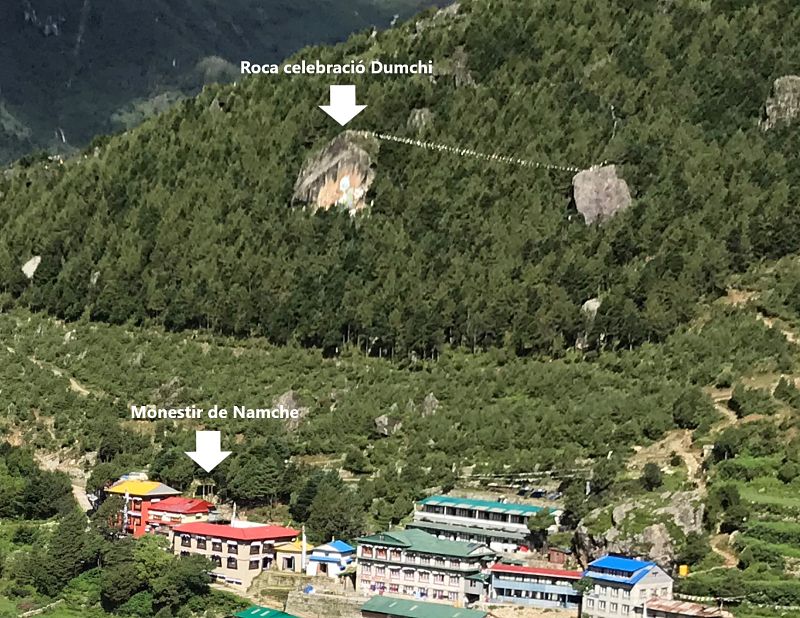
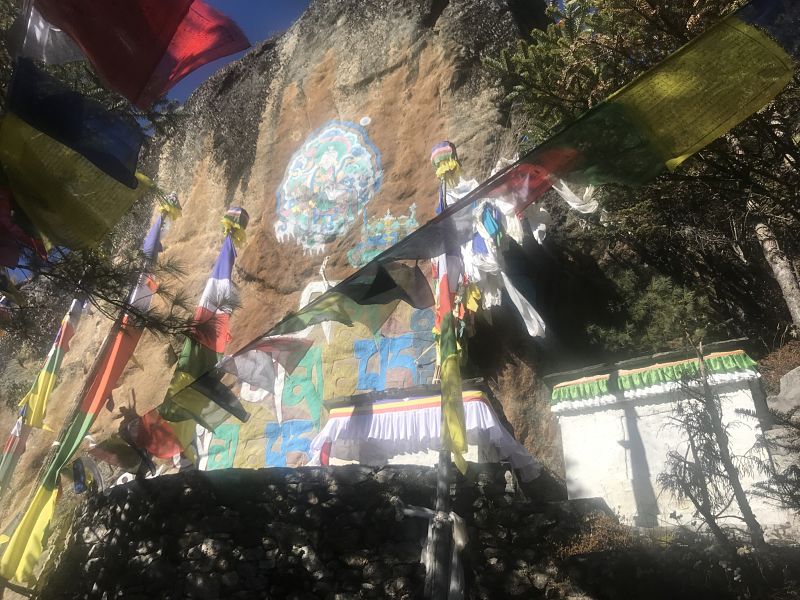
Ceremonies big roc 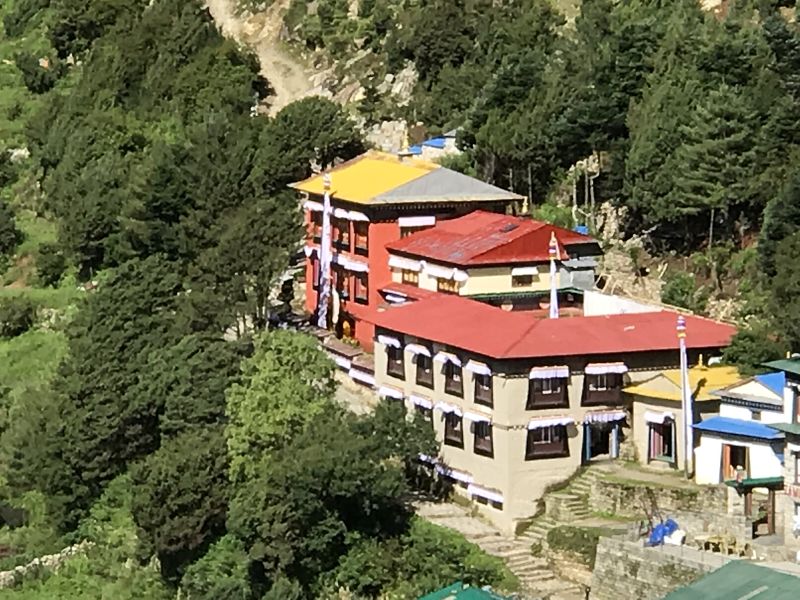
Namche’s monastery
In Thame, it was formerly held in the village monastery until 1952 when it was converted into a monastery of celibate lamas. Then the celebration of the Dumchi moved to Upper Thame, where they built a large chorten (stupa in Nepali) surrounded by a large area that each year was covered with tarpaulins to protect themselves from the monsoon rain during the celebrations. In 1998, with the help of the Austrian organization Eco Himal (www.ecohimal.org), a building was built for this celebration. The two earthquakes of 2015 collapsed everything.
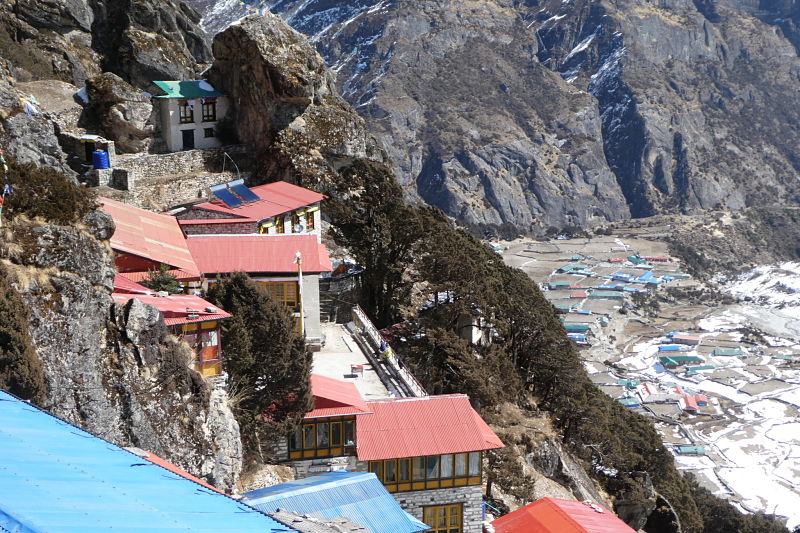
Monastery og Thame 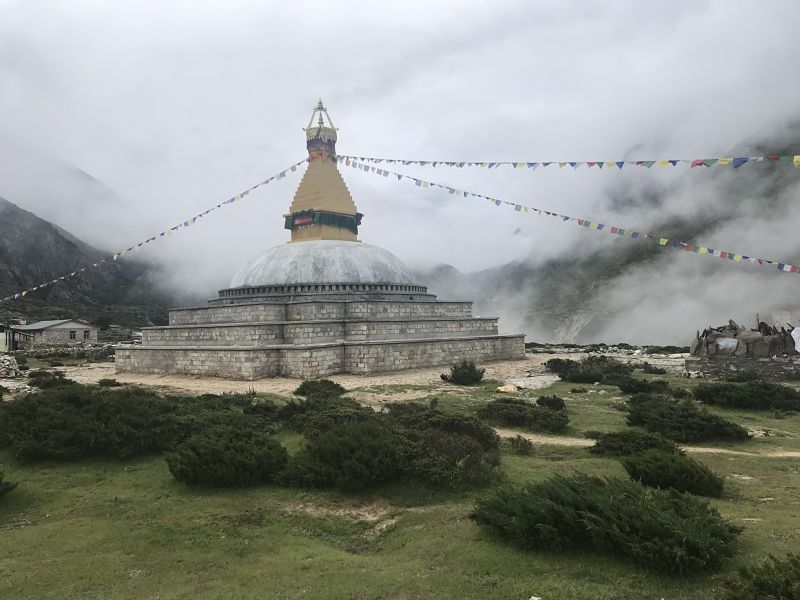
Chorten in Thame
The Sherpa community rebuilt the chorten in a very short time and thanks to foreign donations from Japan, Britain and Germany, the Thame community built a Community Centre which, besides to celebrating the Dumchi, is used for social and educational activities throughout the year.
THE FESTIVAL PROGRAM
The date of the Dumchi festival is the same in all villages and the program is basically the same. In this post I tell you the program followed in Thame.
Preparations for the festival last 11 days and begin on the first day of the fifth month of the Tibetan calendar (this year it was June 22).
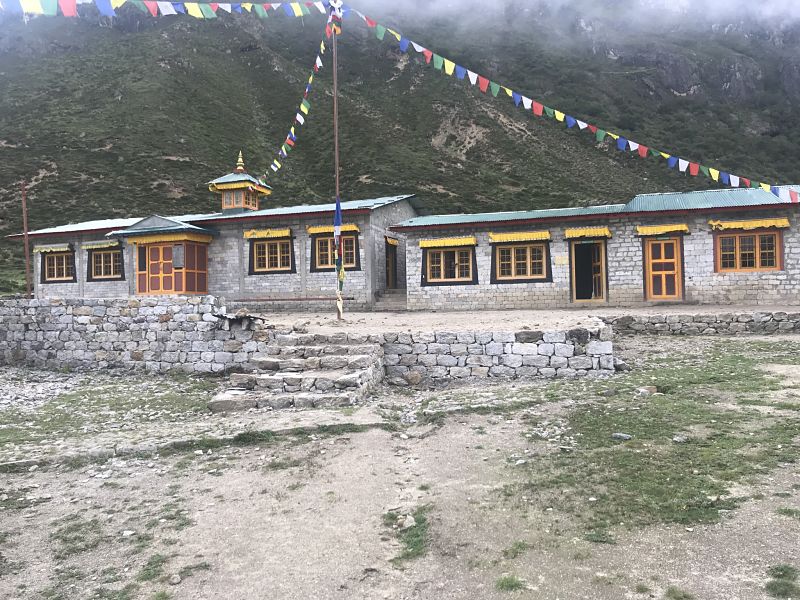
Community Centre of Thame 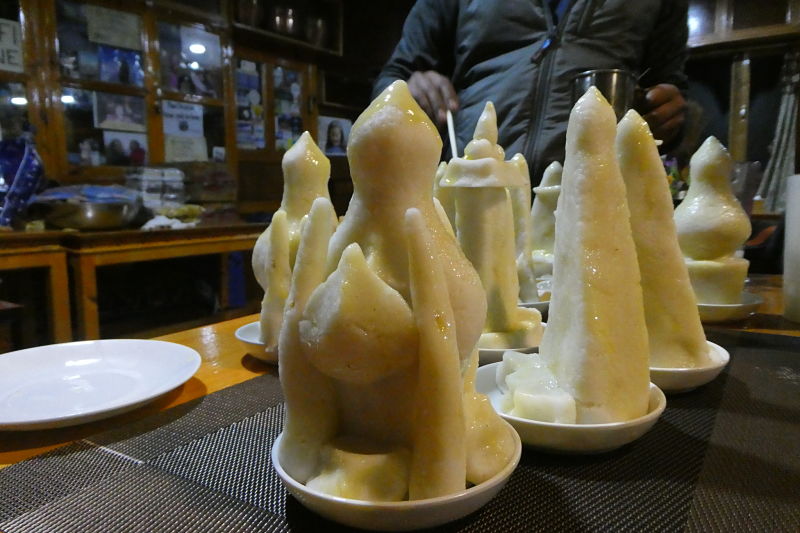
Tormas
During these days, the Lawa families finish the organization of the festival, prepare an altar for the occasion, and repair the damage that has occurred in the chorten since the previous year. The abbot of the monastery blesses the colourful butter that the Lamas will use to make the tormas, which are figures of various shapes, very elaborate, made with a dough made with boiled rice.
On the last preparation day, once everything is ready, they repaint the chorten and make a “reconsecration” of the place. It is this day when, early afternoon, neighbours and lamas gather to place long poles with the prayer flags around the small shrine of the village. Finally, they distribute a ball of boiled rice (drubzhag) to all attendees.
On the 12th day (this year on July 2) the actual celebrations begin and will last for 4 days. The ceremonies usually start in the mid-afternoon and last until late at night.
The first of the 4 days is the Lhapsang, a ceremony with offerings to please the gods, including the goddess Khumbi Yullha, protector of the Khumbu. It follows a ceremony to scare away evil spirits. When it gets dark, the logpar begins, a ceremony to “domesticate” the earth and to protect its inhabitants. There are five dances, some with masks, performed by the Lama monks of the monastery. Then they light a bonfire where, while the Lama monks perform some dances, they throw tormas and liqueurs that provoke spectacular flames of orange colours. The day ends with the logcham, a dance to connect with the life force.
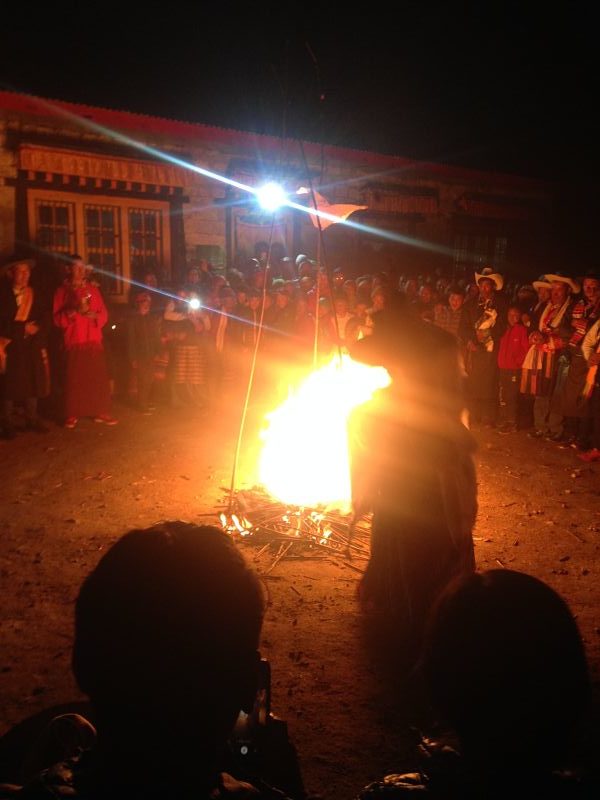
Fire ritual 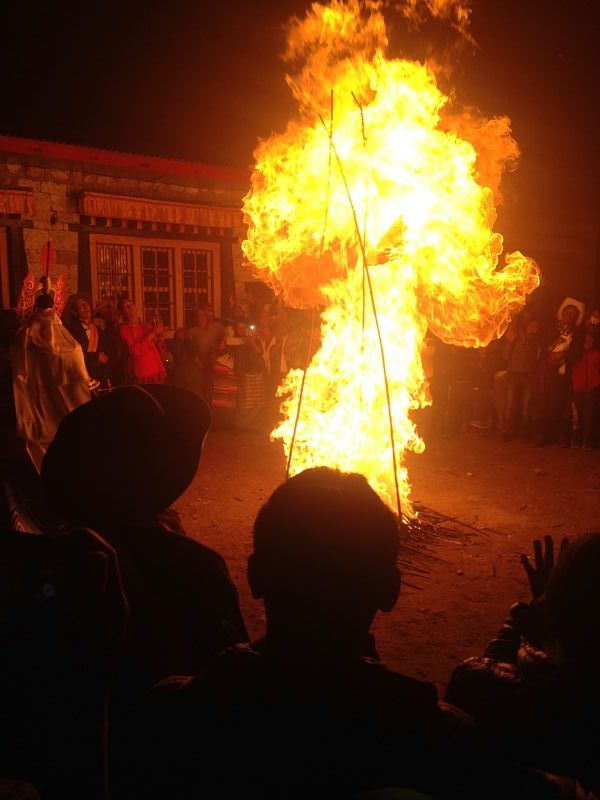
Dance of fire
The second day begins with the performances, by the Lama monks, of two pieces from the so-called Northern Treasure (revelations and a source of knowledge of Tibetan Buddhism). After a break, the Lawa families arrive dancing and singing, carrying bags of rice to hand out to attendees. While all this is going on, all kinds of drinks (tea, beer, chang, tongba) are served to the attendees. A meal of rice and potatoes is served in the middle of the afternoon, and everyone receives four little bags of rice.
The eight Lawa families of the following year are chosen and receive a white torma which they will keep at home until the next Dumchi. The day ends with the Lawa families of the year and the newly chosen ones, singing and dancing traditional Dumchi songs, while offering chang to the monks.
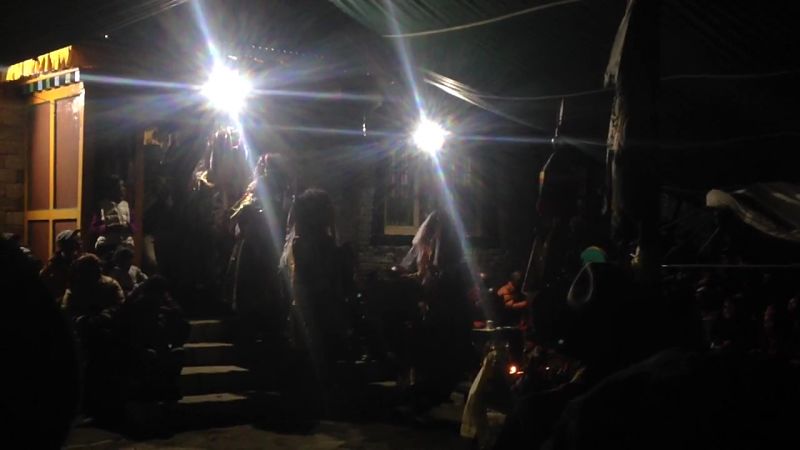
Lamas dancing 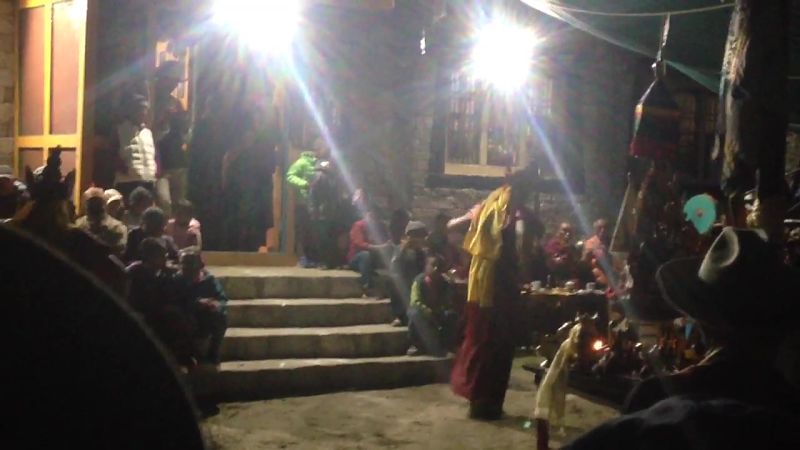
Logcham ceremony
On the third day in the morning, the Lama monks perform an incense offering and meditation ceremony that ends with the blessing the attendees. In the early afternoon, Lawa families serve tea and noodle soup, accompanied by delicious pickles of vegetables, to the monks and other guests. Later, the people of the village and the surrounding area begin to arrive in their best costumes and jewels, to attend the blessing ceremony for a long life (tsewang) and once finished, with the “victory to the gods” prayer, ends the Dumchi.
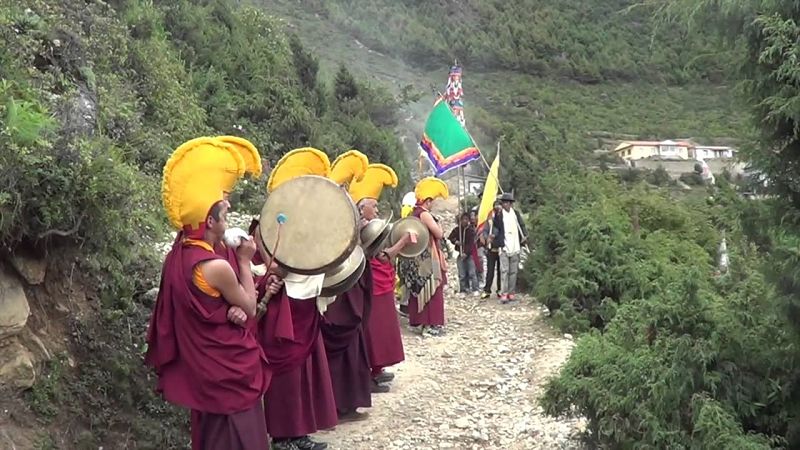
Lamas dancing above Namche’s monastery 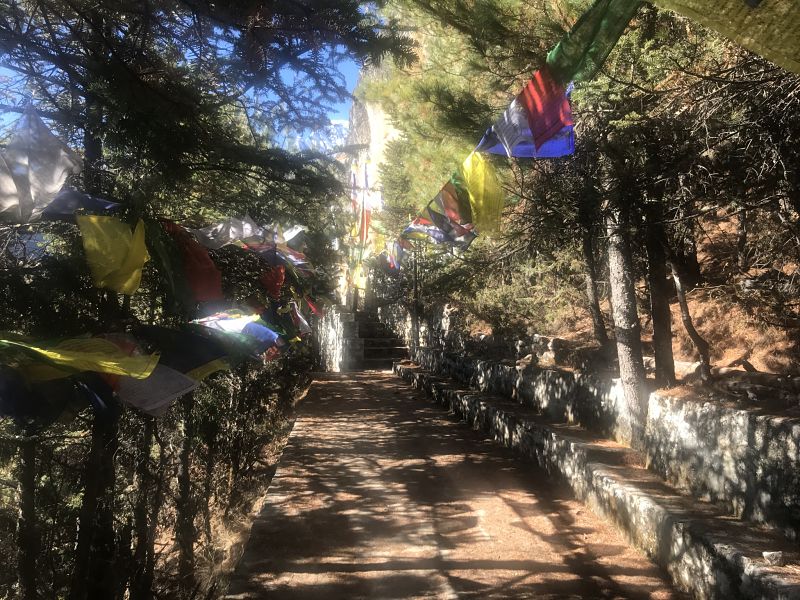
Ceremonies place at the big roc, in Namche
But the party continues. Rice and potatoes are served accompanied by all kinds of drinks to all attendees and people, especially young people, begin to dance until well into the night, forming long lines, side by side, with their arms intertwined. by the back, singing their lilting songs, while the complicated steps of their traditional dances evolve. It is the night of the full moon.
The last day, although the festival strictly speaking ended the day before, is the time to tidy up the place of celebration, and to gather and return to its place all the sacred objects that have been used. They do this, in procession going up to the monastery. Halfway, when they are on the ridge that separates the two neighbourhoods of Thame, they perform a final ceremony with offerings and incense burning. Sacred objects are kept in a shrine of the monastery and … until next year!
As you will not miss, the recurring elements of these celebrations (fire, dance, songs, food and drink) can be found in many of our popular festivals. This makes me think that the cultural and religious differences between two worlds such as Sherpas and ours are, perhaps not so great. This is the beauty of life!